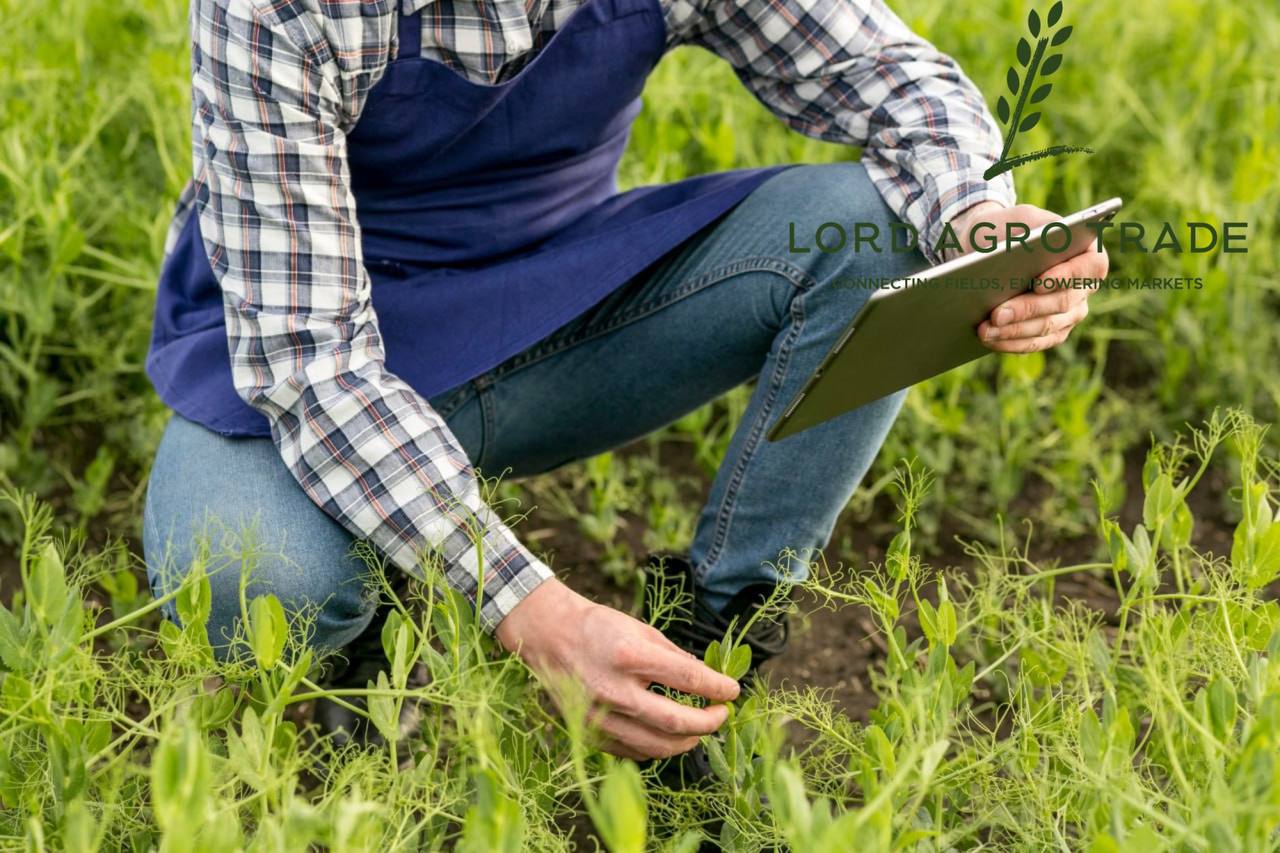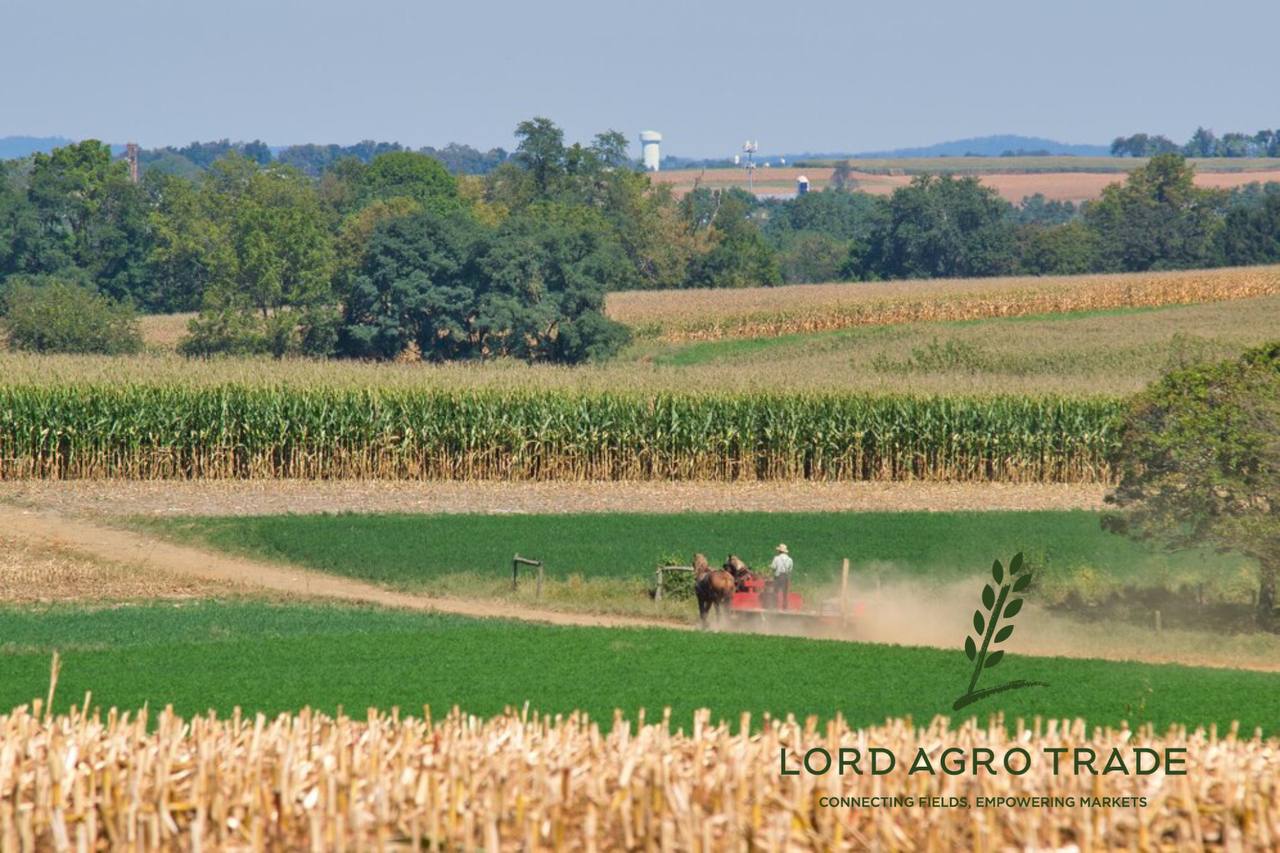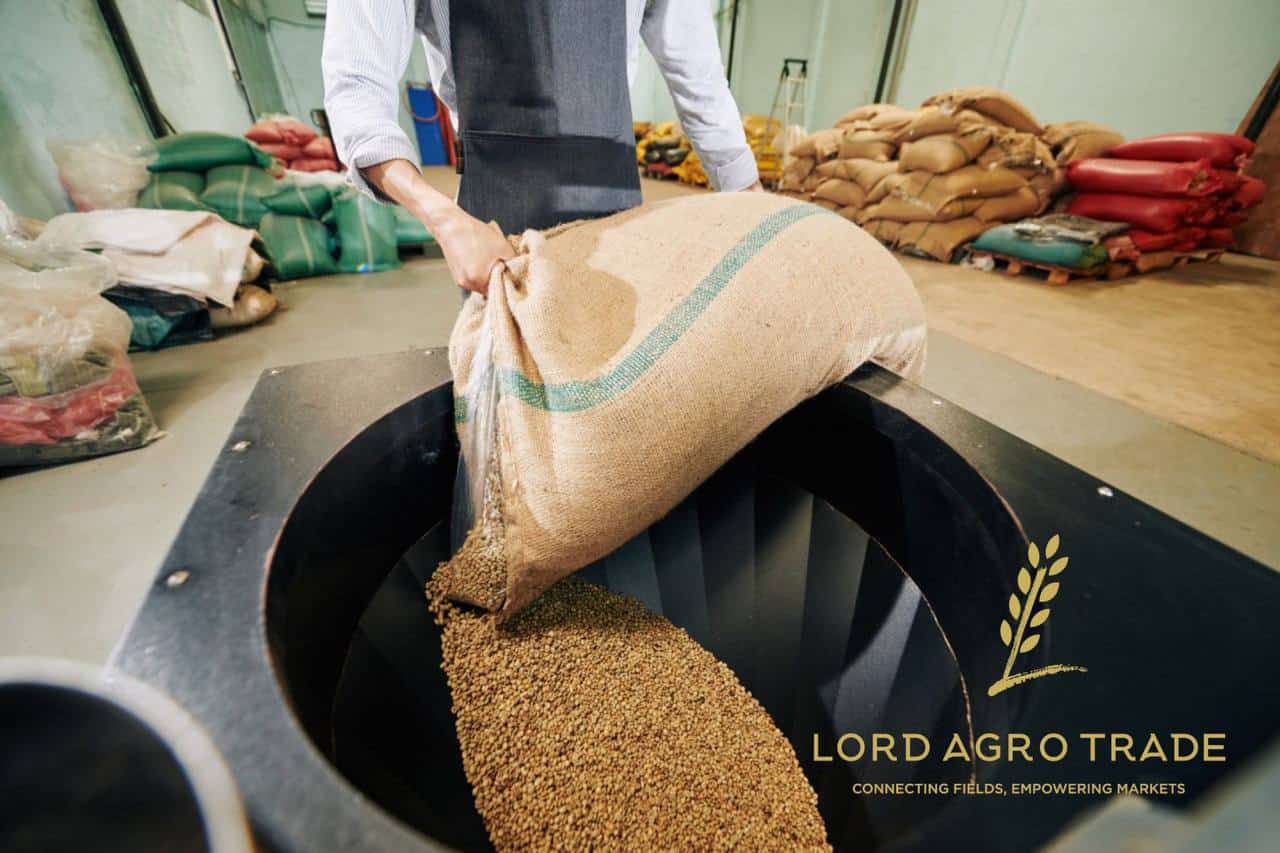Gulfood
17 To 21 FEB 2025 | DUBAI WORLD TRADE CENTRE
We’re excited to see you at Gulfood 2025!
Gulfood
17 To 21 FEB 2025 | DUBAI WORLD TRADE CENTRE
We’re excited to see you at Gulfood 2025!


Canada’s agriculture has been a powerhouse of the economy as well as people’s everyday living and is one of the key sources of their food security. The transport of goods like legumes such as lentils from farm to table involves so many different steps that the outcome of the final product in terms of quality, freshness, and healthiness may be questionable.
The challenges facing Canada’s agriculture are due to the fact that it has shorter growing seasons than other countries. In this way, Canadian farmers can employ various highly effective methods and technologies that can allow them to grow a plethora of good and advanced varieties of products like lentils, wheat, apples, and canola widely.
Lentils are the most popular product traded in Canada because the nutritional value of these products is very high and they also tend to cook fast, thus they become a major product domestically and for export.
Through the substantial production and exporting of lentils in the world, Canada is not only serving its internal markets but the consumers also, by buying this product, take the benefit of its high quality and freshness but they are also supporting the local agricultural sector and the environment.
Agriculture in Canada is a sector that is exposed to specific drawbacks due to country-specific climatic conditions. The country in the north, especially the areas in the northern and central regions, experiences winter that stretches over a long time while the summer days are short, and hence the interval for planting and harvesting crops is limited. Some areas may only be able to grow crops for a few months depending on the growing season, which may be the case. To overcome the constraints, Canadian farmers are resorting to the following common techniques: choosing cold-resistant seeds, extension of greenhouses and the usage of crop coverings to guard the plants from cold, and clever scheduling of seeding and harvesting.

The production of Canadian agriculture is diverse with the major crops being wheat, canola, apples, corn, and vegetables. The important cereals produced in the country are wheat and canola, which are mostly grown in areas with rich soils and suitable climatic conditions. They are not only feeds for humans but also important export crops. Apples and corn, which are exclusively grown in Ontario and Quebec, have contributed considerably to the locals’ demand for food. The climate is a deciding factor in the success of these crops; extremely cold conditions can freeze sensitive plant varieties like wheat and vegetables while hot dry conditions can reduce the quality of the produce.
Suggested article : Green lentils benefits + Nutritional value
To deal with these problems and boost their productivity, the farmers in Canada have adopted high-technology innovations in agriculture through smart farming. Some examples of such technologies include drones, sensors, trackers, and data analytics which provide farmers with information such as soil conditions, levels of water, and temperature, as well as the development stage of the crops at any time. These devices assist farmers in saving resources and maintaining a high level of performance in spite of the variables in climates and unpredictable weather conditions. In particular, in those regions where extreme climates cause additional difficulties for farmers, these tools serve as a means for reducing waste and the production of higher-quality crops by farmers.
Harvesting agricultural products is an extremely vital part of the production and food supply process in Canada. The main challenge of harvesting is the timing and degree of ripeness of the plant, as early or late picking can lead to a future of poorly made-up products. Agricultural producers in Canada, to some degree, of course, observe the farm laws that guarantee the health and quality of their produce.
For instance, a plant that will synthesize wheat should be harvested at maximum ripeness, whereas, in the case of fruits such as apples, they must be bitten when they are red enough to keep their natural flavor and color. The first stage goes through harvesting, which is the removal of spoiled or overripe products, and the transportation to the first processing steps such as cleaning, sorting, and drying to avoid the loss of quality.

The process of production and packaging in Canada is under the strictest inspection and regulations. The right and sufficient packaging of products is very important at least in the shipment itself. It protects goods from mechanical injuries, conveniently prevents their evaporation, and blocks food or any other impurities from getting through. Agricultural products’ packaging should correspond to the health and safety standards to keep people safe from disease, and the environmental degradation of pollutants.
Canada has very strict health and regulatory measures that are directly related to or only applicable to the processing and packaging of agricultural products. Under such laws, the legislative body ensures that product quality and public health are the utmost priority. The entire sequence of operations starting from the harvest all the way to packaging should be in accordance with the hygienic and safety control measures to avoid the transmission of infections and their germs, thus ensuring the necessary and safe delivery of these products to domestic or international markets. These stringent regulations allow the farmers and producers to launch the products they have manufactured up to that level of international safety and quality.
In Canada, given the enormous difference in temperature between the seasons, the storage of agricultural products is one of the most demanding tasks that call for careful implementation of the methods. The winter products are likely to suffer from frost, while the summer months might be occupied by the products having more spoilage which results in a decrease in quality. Even so, the farmers and cultivators can safeguard the products as much as possible by means of hi-tech storage equipment, which is very good not only for the products but also for the environment, in the long run, as it decreases waste production.
One of the most important methods that are used by the farmers when it comes to the storing of the products is cold storage and specialized warehouses. The cold storage facilities are the best option for the seasonal products, being available only during specific times of the year, they will need to be pre-stored to be distributed.
A solid example of this is the supermarket in Portugal, which has moved the fruit and vegetable products that are highly perishable during the time of harvest to the cold storage units in order to preserve and conserve nearly as much as possible the freshness and quality of such products. These warehouses have the ability to operate the temperature and the humidity in such a manner as to create an ideal place for products that deserve to be preserved.
Besides cold storage, new technologies have become a vital part of deterioration prevention and life span extension of agricultural products. The automated monitoring systems that accurately measure the environmental conditions such as temperature, humidity, and airflow, in the storage area, are the ones that make the products last longer. Apart from that, advanced packaging and the use of natural preservatives are also the factors that make the products have longer shelf life and quality. These advancements are the means by which farmers and producers can not only safely store their crops under perfect conditions but also later sell them both in the local and foreign markets.
Given that Canada is a huge country with various climatic and geographical regions, the allocation of agricultural products can be the most troublesome agricultural-related issue. Canada’s transport systems, consisting of sophisticated and durable connections, are immensely beneficial in moving products that are stored in warehouses to all corners of the nation. These networks include all the road, rail, air, and sea transportation services, which take them from the production locations to the consumption centers. Mentioned in regard to, utilizing the latest technologies for tracking and transporting can increase the speed and precision of distribution, thereby decreasing possible delays in shipment.
One of the main difficulties in agricultural distribution concerns the great distances that separate the regions in Canada. The extent of some of the areas, especially in the northern parts and the locales that are not densely populated, but moreover, the huge distances that the shipments have to travel to get there, is the biggest barrier the people would require for them to receive the shipment.

Thus it is likely for it to be expensive and inconvenient concerning the cost and time of carrying out the transportation. The long distances may increase transportation expenses, affecting the final product price. Thus, well-managed transport systems and the use of shorter, or smoother is are a requisite, besides, reducing the cost of delivery and the duration of the transportation program is also necessary.
On the one hand, sustainable and affordable transportation is important for ensuring the quality and affordability of products. On the other, the application of optimized vehicles so as to lessen fuel usage and minimize carbon dioxide emissions and also to choose cheap fast transportation can be one of the contributing factors to overall reduced costs. Containing these low-carbon and environmentally friendly transport practices and thus decreasing the negative environmental effects can be a solution to climate change. Nonetheless, all of these factors are integrated in such a way that they imply more efficient and meanwhile time-efficient distribution of farm products to retailers and local markets in Canada.
What will happen to the export of lentils? Common lentils in export | The future of lentil export
Canada comes up with agricultural products after finishing a couple of processes in production, processing, packaging, and distribution before they are delivered to stores and retailers. Supermarkets, farmers’ markets, and Canadian chain stores are the dominant sales channels for these products. They also stock a large number of items such as fruits, vegetables, and legumes, which enables suppliers to sell their products to local farmers.
In contrast, community farmers’ markets are one of the preferred potential customers for suppliers. Fresh and in good condition is the best advantage that a market has. It is an irritant for products like apples, wheat, and lentils, and for that, Canada’s role as one of the largest producing countries for cereals is a great benefit.

Local markets and agricultural newsletters are also very important in terms of delivering agricultural products to consumers. They also enable direct purchases from producers, which lets people enjoy freshly grown and locally produced products. Furthermore, the markets can promote direct connections and friendlier cooperation between farmers and customers, which would consequently be beneficial for local products. The direct purchasing model, notably in Canada where high-quality products are produced, cuts down costs and hence quality is guaranteed.
In Canada, consumers are growing more and more sensitive to the selection and purchase of agricultural products, hence the need for a more advanced system. The most important issue is the choice of local and organic products, which are less environmentally damaging. Canadians are becoming more aware of the food quality and the origin of it; they are more interested in buying goods that are grown in environmentally sustainable as well as healthy conditions. Local products not only give good taste and quality but they also boost the local economy and help the farm industry in Canada. The increasing demand for organic products is due to health concerns and the minimized usage of chemicals and pesticides in production.
For Canadian consumers, however, the very important part of the home storage of products is their freshness which tells about the shelf life. The different products need different storage conditions to be fresh for a long. For instance, fruits and vegetables should be kept in the refrigerator to prevent early spoilage, while the grains and legumes should be stored in dry, cool places. Proper storage tips are the tips that let the consumers extend the shelf life of the products and keep them fresh and tasty.
Over the past few years, people in Canada have shown a shift in their consumption patterns, as Canadians are now keener toward eco-friendly products and locally made goods. This, in turn, is especially evident in the younger generations whose primary concerns are climate change, environmental protection, and health care. Therefore, the customers are now opting for local, organic, and sustainable products. This means that there is an upward movement in the market, making it clear that people are becoming more conscious and responsible in their buying.
The agricultural sector, as well as the supply chain of agricultural products in Canada, comes across a whole bunch of distinctive problems that basically make the supply chain less efficient and less sustainable. One of the greatest problems is climate change which directly affects agriculture production by deteriorating it. The worst weather conditions such as extremely cold winters and extremely warm summers can influence the crops’ quality and the quantity of production, respectively.
On the other hand, the high costs of energy, equipment, labor, and processing in areas with long distances also constitute the main challenges. Since there are huge distances between production and consumption areas, Canada has to bear the high transport and distribution costs, which in turn affect the final price of products.

Still, new technologies have brought a lot of opportunities for the agricultural supply chain to be improved. Customers can now buy products directly from farmers without any middlemen, thanks to direct sales applications. Farmers have also the chance to enter new markets and thus it helps them to sell not only their local products. Furthermore, tracking systems as well as the Internet of Things (IoT) enable dealers and farmers to control the traceability and quality of products right from the production point to the delivery point. Moreover, these technologies also are a source of reducing waste as well as boosting efficiency in the distribution process.
In addition, the Canadian government and industry groups have promoted policies supporting farmers in terms of both context and economy related to the challenges. Development through the regulations of the government to farmers in the sector comes in the form of a relaxing climate, subsidies, low-interest loans, and support programs. This is further strengthened by research and development programs that stimulate farmers in the use of contemporary technologies and the upgrading of agricultural modes. These efforts are involved in the improvement of food security in the country and they also motivate the farmers to be able to produce more efficient and cheaper products which, in the long run, will eventually lead to a successful agricultural supply chain.
Conclusion
Thus, the agriculture supply chain serves as one of the backbones of food production; through it, residents in Canada can be assured of basic food products such as fruits and vegetables. Although the various processes within this supply chain, from production to distribution, are involved in the food system as an end-to-end operation, each one has its share in ensuring that people have something to put on their tables.
A supply chain that nurtures farms and efficiently delivers their products might not be the only ingredient of a healthier eco-environment, but it is surely the most important part of the solution. Consequently, sustainability becomes the major issue as it is the production and product distribution that is responsible for both greenhouse gas emissions and food waste. Hence, it is necessary for facilities like farmers and distributors to be supported as they are the main contributors to this sector. Farmers and distributors who have to endure the furor of the weather and the economic and social turbulence of the COVID-19 pandemic are the hope for the future of the sector.
However, the idea that when consumers choose to support sustainable agriculture, conscious consumption is achieved, and the supply chain is therefore improved, cannot be underemphasized among the Canadian populace. In this sense, consumers do have the power to stimulate sustainable agricultural practices, as well as minimize food waste by making good purchasing decisions, thus, indirectly motivating companies to put in more effort to ensure responsible practices in the supply chain. Thus, connecting major players such as government, farmers, distributors, and consumers to cooperate is indispensable to a rich, efficient, and ecologically friendly supply chain.